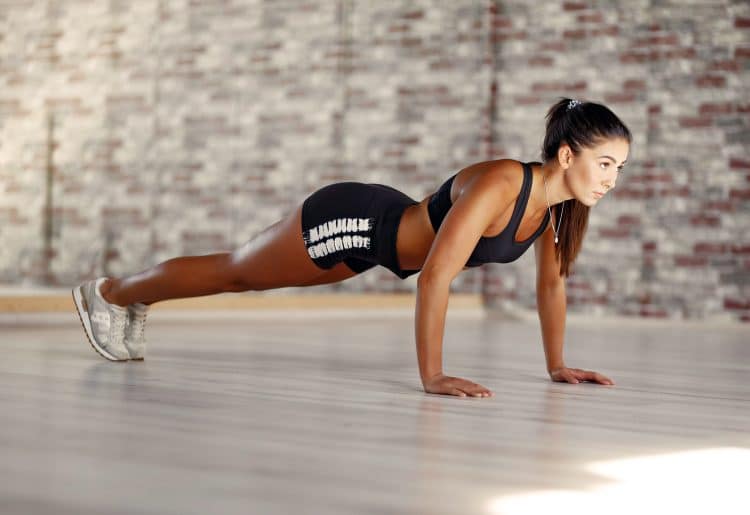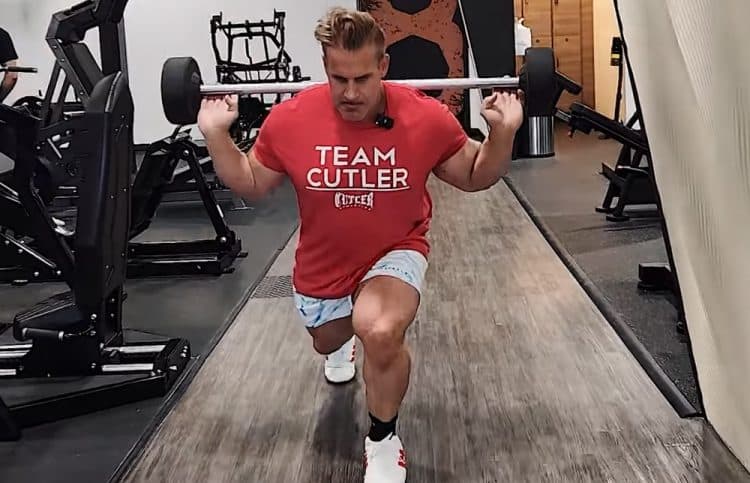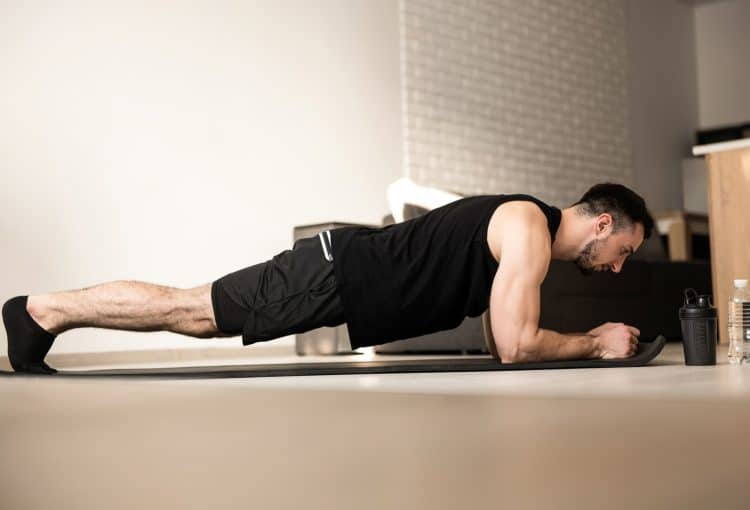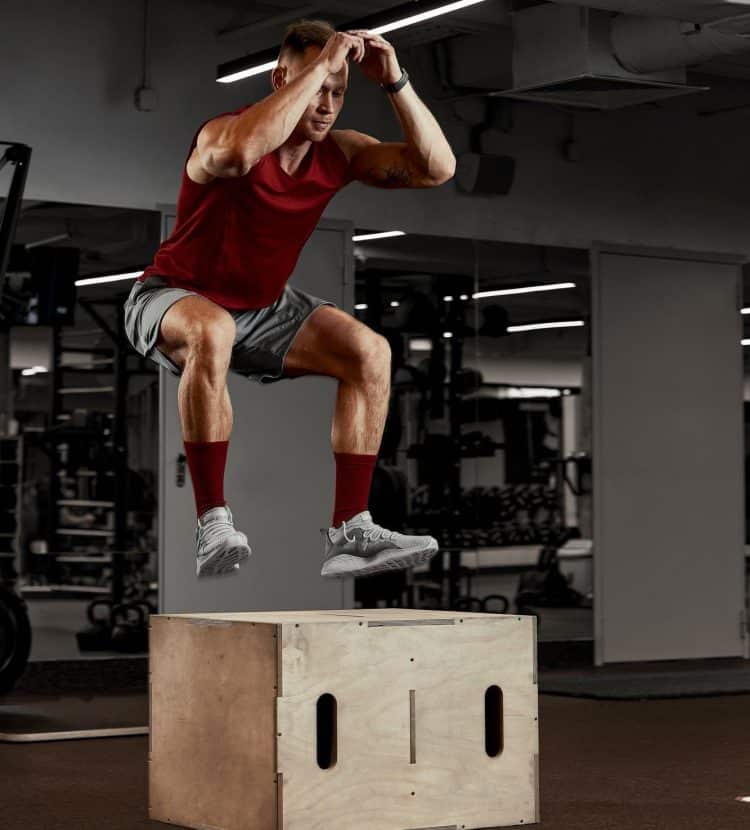Running is one of the most popular fitness activities. People run for a host of reasons, from weight management to general fitness to competition. Studies also show that running can be very good for your health, reducing many of the greatest risks to mortality (1).
However, while running has numerous benefits, it’s not without drawbacks, and injuries are very common. In fact, nearly 50% of all runners will experience running-related injuries at one time or another.
The most common running injuries are (2):
- Runner’s knee (patellofemoral pain syndrome)
- Stress fractures
- Shin splints (medial tibial stress syndrome
- Achilles tendonitis
- Plantar fasciitis
As a former competitive long-distance runner, I know firsthand how frustrating injuries can be. While initially, you may be able to train through the pain, you probably won’t be able to run as far, fast, or as often as you want.
In some cases, a break from training is unavoidable, and your fitness will soon start to decline.
The good news is that many running injuries are avoidable, and the training method that can prevent aches and pains will also boost your running performance.
Level Up Your Fitness: Join our 💪 strong community in Fitness Volt Newsletter. Get daily inspiration, expert-backed workouts, nutrition tips, the latest in strength sports, and the support you need to reach your goals. Subscribe for free!
I’m talking about circuit training.
In this article, I discuss how circuits can enhance your running and help keep you healthy.
The Benefits of Circuit Training for Runners
Runners love to run and are often reticent to spend their time and energy on anything that doesn’t put miles in the bank. After all, most runners are fixated on their weekly mileage. That said, there are some significant benefits to adding circuit training to your weekly schedule, even if it means running a little less. These benefits include:
Increased Strength
Strength is an undervalued fitness component for runners. However, the stronger your muscles are, the more force you’ll be able to generate and the faster you’ll be able to run. You’ll also find it easier to power up hills and push the pace when you are tired. Strength is especially important in the latter stages of races. Read also: The 12 Best Strength Training Exercises for Runners
Fix Muscle Imbalances
Running is a repetitive activity where some muscles work very hard while others barely work at all. This can result in muscle imbalances, which affect joint mechanics and function. A well-designed running circuit can address these imbalances or prevent them from developing in the first place.
More Stable Joints
Unstable joints put a lot of strain on your bones, muscles, and connective tissue. The average runner takes about 150+ strides per minute. Run for an hour, and that’s a lot of work for your joints – 9,000 separate impacts or more.
Stable joints are less prone to wear and tear. Unilateral leg exercises such as lunges and split squats enhance stability, reducing the risk of instability-related injuries. In addition, stable joints are more energy-efficient, so you can put more effort into each stride you take.
Better Posture
You can often identify runners from their slightly hunched posture. This is partly caused by muscle imbalances but is also the result of a constant striving to go forward. Poor posture can cause neck and back pain and also inhibit efficient breathing. Some of the exercises in a running-related circuit will help improve posture.
A Stronger Core
Your core is the muscles that surround and support your spine. A strong core will help prevent lower back pain and ensure that the forces generated by your upper body as you swing your arms are transmitted to your legs for a more efficient running gait. Any running-specific circuit should include at least a few core exercises.
Improved Fitness with Less Running-Related Stress
While running will develop your cardiovascular fitness, too much can lead to overtraining and injuries.
However, you can maintain and even improve your fitness in numerous other ways that complement your running while reducing repetitive stress. Circuit training enhances cardiovascular fitness despite predominately being an anaerobic activity (3).
You can also use running to maintain your fitness when running is impractical, e.g., because of bad weather or when you must rest to allow an injury to heal.
Increased Mental Toughness
Running, especially racing, is mentally as well as physically challenging. Pushing yourself to a new personal record or through a tough training run requires determination and strength of mind. Completing a demanding circuit workout will train your mind as much as your muscles, and you’ll be able to call on this fortitude during races and intense training runs.
Accessible, Time-Efficient Workouts
While you may be reluctant to spend time and energy on anything that isn’t running, you have now seen how beneficial circuit training can be for runners. But, best of all, it’s also incredibly accessible and time-efficient, so you won’t have to sacrifice much mileage to fit it into your schedule.
In fact, just a couple of 30 to 40-minute workouts per week are all you need to make the most of circuit training.
Summary: Circuit training offers many benefits for runners, from injury prevention to improved running performance. So, the question is not if you should start circuit training, but why would you not?!
Example Circuit Training Workouts for Runners
With so many benefits, you should now be sold on how circuit training can help make you a better, healthier runner. Not sure where to start? No problem, because I’m here to help!
Here are five example circuits to try.
Circuit #1: General Fitness and Conditioning (Bodyweight)
This is a great circuit for anyone looking to improve their general fitness for running. Requiring no equipment, you can do this workout at home, at a park, or anywhere you have a few yards of space.
Do 3-5 rounds of the following exercises, moving quickly from one station to the next. Complete as many reps as you can in the allotted time. Rest 1-2 minutes between rounds.
| # | Exercise | Duration |
| 1 | Air squat | 30-45 seconds |
| 2 | Push-up | 30-45 seconds |
| 3 | W-sit | 30-45 seconds |
| 4 | Alternating lunge | 30-45 seconds |
| 5 | Chair dip | 30-45 seconds |
| 6 | Reverse crunch | 30-45 seconds |
| 7 | Jumping jack | 30-45 seconds |
| 8 | Wide push-up | 30-45 seconds |
| 9 | Leg raise | 30-45 seconds |
| 10 | Burpee | 30-45 seconds |
Circuit #2: Lower Body Strength and Power
While runners don’t typically need bodybuilder-sized legs, they do need plenty of lower-body strength and power. These attributes will allow you to run faster, improve joint stability, and lower your risk of injury. However, this is an intense workout, so don’t do it the day immediately before or after a tough run.
Level Up Your Fitness: Join our 💪 strong community in Fitness Volt Newsletter. Get daily inspiration, expert-backed workouts, nutrition tips, the latest in strength sports, and the support you need to reach your goals. Subscribe for free!
Do 3-5 rounds of the following exercises. Move quickly between stations, but don’t rush. Avoid being so out of breath that you cannot put maximum effort into each movement. Perform the specified number of reps for each exercise and rest for 2-3 minutes between rounds.
| # | Exercise | Duration |
| 1 | Wall squat | 20 seconds |
| 2 | Squat jump | 6-10 reps |
| 3 | Walking lunge | 12-15 reps per leg |
| 4 | Jumping lunge | 4-8 reps per leg |
| 5 | Isometric hip bridge | 20 seconds |
| 6 | Banded good morning | 12-15 reps |
| 7 | Calf raise | 12-15 reps |
| 8 | Two-footed ankle jump | 30-40 reps |
Circuit #3: Core Workout for Runners
A strong core is essential for faster, safer, more efficient running. However, many exercisers find core training repetitive and boring. This core circuit won’t take long, but it hits your muscles from multiple angles to improve running performance and reduce your risk of injury.
Do 2-3 rounds of the following exercises, moving quickly from one station to the next. Rest 1-2 minutes between rounds.
| # | Exercise | Duration |
| 1 | Plank | 30-45 seconds |
| 2 | Side plank (left) | 30-45 seconds |
| 3 | Side plank (right) | 30-45 seconds |
| 4 | Prone superman | 30-45 seconds |
| 5 | Pallof press (left) | 30-45 seconds |
| 6 | Pallof press (right) | 30-45 seconds |
| 7 | Medicine ball slam | 30-45 seconds |
Circuit #4: Full Body Strength (Gym)
Strength is an often-undervalued fitness component for runners. However, building strength without bulk will have a huge impact on your running performance and risk of injury. There is a reason that elite runners, even marathoners, include strength training in their schedules!
This workout is built around a few basic freeweight exercises, so you won’t need access to a state-of-the-art gym to do it.
Do 3-5 rounds of the following exercises. Move quickly between stations, but don’t rush. Avoid being so out of breath that you cannot put maximum effort into each movement. Perform the specified number of reps for each exercise and rest 2-3 minutes between rounds.
| # | Exercise | Duration |
| 1 | Barbell front squat | 4-6 reps |
| 2 | Dumbbell bench press | 4-6 reps |
| 3 | Pull-up/chin-up | AMRAP |
| 4 | Romanian deadlift | 4-6 reps |
| 5 | Dumbbell overhead press | 4-6 reps |
| 6 | Single-arm dumbbell row | 4-6 reps |
Circuit #5: Running Speed and Endurance Workout
Circuit training workouts are often quite general and designed to improve basic fitness, strength, and conditioning. However, by selecting your exercises carefully, you can create a circuit that is much more running-specific. This program will boost running speed and endurance.
Do 3-5 rounds of the following exercises, moving quickly from one station to the next. Complete as many reps as you can in the allotted time. Rest 1-2 minutes between rounds.
| # | Exercise | Duration |
| 1 | Alternating step-up/knee-up | 30-45 seconds |
| 2 | Dumbbell arm sprints | 30-45 seconds |
| 3 | Banded sprints | 30-45 seconds |
| 4 | Bicycle crunch | 30-45 seconds |
| 5 | High-knee jump rope | 30-45 seconds |
| 6 | Plyo push-ups | 30-45 seconds |
| 7 | Box jumps | 30-45 seconds |
| 8 | Shuttle sprints | 30-45 seconds |
Note: Reps, times, rounds, and recoveries are listed for illustrative purposes only. Please adjust these workouts according to your needs and abilities.
FAQ’s
Do you have a question about circuit training for runners? No problem, because I’ve got the answers! Drop me a line in the comments section below if you need more information, and I’ll get back to you ASAP.
1. What is the best way to warm up before circuit training?
All good workouts start with a thorough warm-up. Warming up prepares your muscles and joints for what you are about to do, maximizing workout performance and lowering your risk of injury.
Complete the following to warm up before circuit training:
- 5-10 minutes of easy cardio, e.g., jogging or jump rope.
- Mobility exercises for the joints you’re about to use, e.g., shoulder circles and waist twists.
- Dynamic flexibility exercises for the target muscles, e.g., leg swings and standing pec flies.
- A few reps of the exercises you are about to perform – typically 50% of what’s programmed.
Alternatively, you can use your scheduled run as a warm-up for circuit training.
Related: How to Warm Up for Strength Training
2. How do you vary the difficulty of a circuit workout for running?
If you do the same workouts over and over, your fitness will soon begin to plateau. That’s true for running, lifting weights, and circuit training. These are the variables you can manipulate to alter the difficulty of your circuit workouts. Ramp up or down according to your needs and abilities:
- Exercise difficulty
- Number of exercises per workout
- Duration/number of reps
- Load
- Proximity to failure
- Rest between exercises
- Number of rounds
- Rest between rounds
Manipulating these variables means you can fine-tune your workout and customize the training effect.
3. Should all runners do circuit training?
Circuit training can be a valuable addition to your running workouts. It’s an effective and time-efficient way to develop the fitness components not affected by running. As such, it can enhance your running performance while reducing your risk of injury.
However, circuit training is not the only way to achieve these goals.
You can also use conventional strength training or hybrid training to fill your fitness gaps. That said, circuit training is arguably the workout that complements running the best. It provides the most bang for your buck, leaving you with more time and energy for running.
Closing Thoughts
Runners love to run. However, if you want to be the best runner possible, you’ll need to do more than pound the pavement and clock up endless miles. Running should be the foundation of your training, but other workout methods will help plug any gaps in your fitness.
For example, runners need flexibility and core training to prevent injuries and strength workouts to eliminate the weak links and imbalances that can lead to injuries.
Circuit training is one of the most time-efficient ways to address your fitness deficits. Just two 30 to 40-minute workouts a week are all you need. This should leave you with more than enough time and energy for running.
So, try adding circuit training to your running schedule. In just a few months, you should find yourself running further and faster than before while contending with fewer aches and pains.
Related:
- What is Circuit Training? The Ultimate Guide to Get Lean
- Circuit Training vs. HIIT For Fitness and Fat Loss
- Circuit Training vs. Cross Training: Definitions, Benefits, and Which Should You Do?
- Abs Circuit Workout: Training and Nutrition Tips for a Six-Pack
References:
- Lee DC, Pate RR, Lavie CJ, Sui X, Church TS, Blair SN. Leisure-time running reduces all-cause and cardiovascular mortality risk. J Am Coll Cardiol. 2014 Aug 5;64(5):472-81. doi: 10.1016/j.jacc.2014.04.058. Erratum in: J Am Coll Cardiol. 2014 Oct 7;64(14):1537. PMID: 25082581; PMCID: PMC4131752.
- Kakouris N, Yener N, Fong DTP. A systematic review of running-related musculoskeletal injuries in runners. J Sport Health Sci. 2021 Sep;10(5):513-522. doi: 10.1016/j.jshs.2021.04.001. Epub 2021 Apr 20. PMID: 33862272; PMCID: PMC8500811.
- Muñoz-Martínez FA, Rubio-Arias JÁ, Ramos-Campo DJ, Alcaraz PE. Effectiveness of Resistance Circuit-Based Training for Maximum Oxygen Uptake and Upper-Body One-Repetition Maximum Improvements: A Systematic Review and Meta-Analysis. Sports Med. 2017 Dec;47(12):2553-2568. doi: 10.1007/s40279-017-0773-4. PMID: 28822112.


















